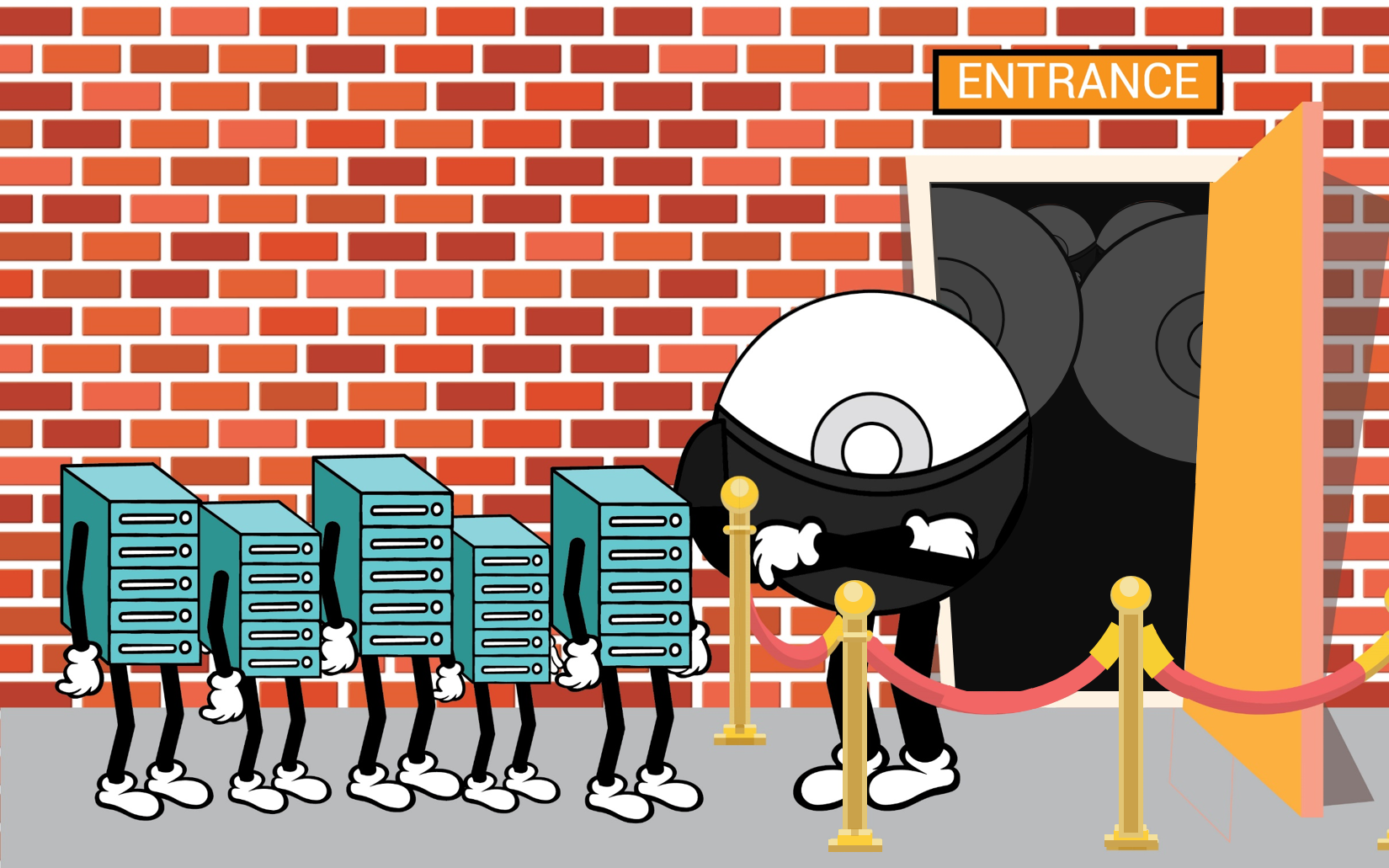What is a Software-Defined Data Center?
A software-defined data center means Software-Defined Everything: All aspects of the IT stack have virtual rather than physical implementations.
The SDDC trend grew out of the earlier needs to advance virtualization, which necessitated software-defined networks and shortly thereafter, software-defined storage, both of which allow the layers of the data center to be controlled more easily and automated more extensively, resulting in a “Converged Infrastructure”. The simplest form of this trend is the software-defined networks found in virtualization products. The extreme form of SDDC is massive appliances that include hardware, software, networking, storage, servers, and racks. Cisco started this trend with their Unified Computing Services, followed by SimpliVity and Nutanix. These latter offerings come with monitoring, automation, and pre-configurations for different needs, greatly simplifying the task of managing the data center.

The increase in simplicity realized from “Converged Infrastructure” paved the way for delivery of Infrastructure as a Service: Amazon Web Services changed the world of IT by pioneering a new way to deliver IT, and the other public cloud providers such as Microsoft, Google, and IBM soon followed. These providers allow you to use APIs to create the infrastructure you need to run your business on demand.
A software-defined data center differs from a private cloud, since a private cloud only must offer virtual-machine self-service, beneath which it could use traditional provisioning and management. Instead, SDDC concepts describe a data center that can span private, public, or hybrid clouds.
What is the value of a Software-Defined Data Center?
SDDC is the technology architecture that drives the systems behind Amazon AWS, Microsoft Azure, and all of the other major cloud providers. This ability to provision infrastructure from top to bottom via an API, also known as IT as a Service (ITaaS), allows customers to scale ‘deployments’ up and down on demand and represents the primary value driver for cloud providers.
The low startup cost of paying for compute power only as it is needed has allowed many startups to test ideas that, fifteen to twenty years ago, may not have been possible. SDDC has made the cost of testing those ideas feasible and has reduced the cost of failed ideas, thereby bringing a wave of innovation to market in quantities and at speeds that were never before possible. Prior to the SDDC, this would have required months if not years of incremental cycles of testing, proving the idea, venture capital funding, and setup to build the idea and to try to get it to market. Before the SDDC, for many, the risk was just too great, or the capital just wasn’t there.
SDDCs are not only simpler and more manageable, but also more easily align with company’s’ business needs. They have the flexibility to quickly take on many configurations, capabilities, and forms, and can support companies ranging from the size and complexity of the FANG companies (Facebook, Amazon, Netflix, and Google) to companies with much simpler operations. The speed of deploying systems is also dramatically increased.
The Future of the Software-Defined Data Center?
The concepts behind the SDDC have been dismissed by some as simply “software-defined” hype. Some critics believe that only a minority of companies with completely homogenous IT systems already in place (FANG companies, specifically) can truly transition to software-defined datacenters. Others believe that outside of this circle, there may simply be no need to take the datacenter to this level of ‘lights-out’ automation. There may be a bit of truth to both views.
The FANG companies have implemented their visions by investing years of engineering time and billions of dollars. It is, however, possible for any company to start on the road to IT as a Service and to reap benefits that are specific to their business. That last point is important: your company’s approach to ITaS will likely be different than that of other companies, because it will be built to support your business’s unique needs.
Therefore, rather than look at what the FANG companies have done and try to duplicate their capabilities, start by understanding your own data center and your business requirements. Your task is to figure out what you have and then make that more adaptable. You must understand how to best support the applications needed by your business so that they can scale and adapt to your needs. Your data center is likely starting from a point of too much complexity; you’ll need to simplify and pare down.

Device42 Can Help You Transform Your Datacenter
When it’s time to implement a move of some or all applications to an SDDC architecture, one of your first steps needs to be creation of a map showing all the servers, network components, software, services, and applications and most importantly, how they are all connected. A map is critical for planning out the configuration of the SDDC. As importantly, as you move software, services, and/or applications from one set of servers to another set of servers, you need a good map of all the connections and interdependencies. Without a map, it will be difficult to establish all the connections in the new environment and you run the risk of unintended outages when you remove software or services if other applications depend on them.
Device42 can help to provide you with a complete view of your entire physical, virtual, and cloud data center. It’s powerful auto-discovery can ingest, update, and then quickly replace your outdated documentation – in a few short hours or days from install. From there, you can use Device42’s charts, graphs, and reports on your infrastructure interdependencies, locating points of overcomplexity, and focusing on eliminating these likely points of failure. Analyzing inter-dependencies with Dependency and Topology charts, as well as Service Dependency Reports will prove valuable in planning your transformation.
Aligning the information gleaned from an accurate, up-to-date picture of your datacenter provided by a powerful CMDB like Device42 with the needs of your business will have you on a tried and true path to the next generation of your data center. The built-in software license management tools can help ensure you are running properly licensed, but also ensure you aren’t over licensed, keeping your data center lean.
Though the path is well traveled and well known, the stops along the way are unique for each business. Use the achievements of the FANG companies as a guide, and Device42 as your toolkit. Do not hesitate to borrow from their repertoire of developments, as it’s unlikely most will have the resources to dedicate to develop anything similar in house – and that’s OK, as at the end of the day, that’s not likely what your business will really need, anyway.
See why customers in over 50 countries are using Device42.
Download Device42 today
It’s fully functional, and completely free to try.
Sources & Relevant Links:
VMware: “The software-defined Datacenter – In Depth”
Wikipedia: software-defined Datacenter
Storage News: Nutanix, Simplivity, and VMware Lead software-defined Storage Market
GCN: With converged IT, agencies rethink the data center



